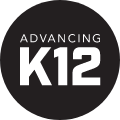
Where do academic innovations, system-wide improvements, and culture-building initiatives originate? The district business office might seem like an unlikely answer, but new guard leaders have begun to challenge long-held stereotypes.
Forward-thinking school finance and HR leaders have made it this far because they know how to get the most out of the tools available to them. They’ve come in with a mission to eradicate inefficient, manual processes and bridge the traditional chasm between the school’s educational mission and the people who keep it running.
So how can your district evolve beyond the HR practices holding back your culture and move on to worthier goals? Let’s explore three ways for the new guard to embrace fun, innovation, and creativity and breathe life into the new and future version of school business.
Bridge the Divide
It’s not just generational differences contributing to the disconnect between the business office and the rest of the district – it’s a cultural disconnect and a communication breakdown. School districts have gotten a bad rap for their silo mentalities and red tape. The modern school business official is hoping to change that by taking a systems-thinking approach to otherwise specialized jobs. But how does this look on a day-to-day basis?It starts with business leaders who are intentional about seeing the district through new perspectives – especially those of the students. Menasha School District’s director of business services Brian Adesso breaks down barriers by spending more time side by side with kids: riding buses, eating cafeteria meals, and visiting classrooms. Several award-winning business leaders have reported similar forays into the learning environment, citing them as key learning experiences.
Transparency helps here, too. Help people understand the story behind the numbers coming from the business department, instead of inundating them with numbers sans context. 2016 ASBO Distinguished Eagle Award Recipient, Christine Lee, designed an attractive one-page infographic so she could make her district’s $120 million budget more accessible to all district stakeholders, regardless of their levels of financial savvy.
You won’t likely spot an old guard business leader traveling via school bus, kicking it on the soccer field, or working on design projects. But mission-driven, new guard leaders have been known to break boundaries, changing the perception of school business officials from behind-the-scenes, buttoned-up professionals to everyday partners in learning.
Action Items:
•Spend time in and around the learning environment.•Apply design thinking and user experience principles to your processes.
•Emphasize transparency and service in every interaction.
Attract the Right Talent
If your HR department doesn’t have a hand in shaping district culture and brand-building efforts, you’ve likely fallen behind. New guard HR leaders are in the business of attracting and retaining the best talent. Today, it’s not enough to rely on a job posting and a pinch of luck to find the best candidates.The business office can improve your powers of talent attraction by teaming up with the IT and communications departments. A recent deep-dive into hundreds of school district websites revealed some common themes among districts whose web presence is helping recruitment efforts. When a candidate’s first look includes beautifully designed testimonials, engaging multimedia resources, and evidence that your district is a top workplace, your bounce rate will likely plummet. A smooth, stress-free online application process seals the deal.
Social media and HR technologies are both key to engaging talent and sustaining a conversation throughout each point in the hiring process. These tools help keep applicants engaged through regular updates, and they also give you a sneak peek at their communication and technology skills.
Beyond tech tools, well-developed, thoughtfully-designed compensation models can go a long way to attract well-qualified candidates looking to start or grow a career in a stable, successful district. Business offices can help boost the teaching profession and improve schools through their innovative, creative efforts.
Action Items:
•Get proactive about recruitment through social media.•Adjust hiring practices and tech to reduce turnaround times and deliver a better experience for applicants.
Innovators in Education
At the end of the day, the business office wouldn’t exist if it wasn’t for one goal: to improve student learning. New guard business leaders recognize their unique ability to impact student achievement, and the best of them are spearheading educational innovations in their districts.Frank J. Frazee, a school business administrator at Ocean County Vocational Technical School and ASBO 2016 Pinnacle of Achievement Award winner, developed a partnership between his school and the county to revive a failing restaurant at the county golf course. Not only does this partnership provide on-the-job culinary skills training, restaurant management experience, and internships for students, but it also provides a welcome boost to the local economy and culture.
Other innovative solutions have had their origins in the business office, as well. Lake Orion’s Project: BusSTAR, an initiative that brings bus drivers into schools as volunteers and brings books and other educational materials onto the buses, garnered a Pinnacle of Achievement Award for John D. Fitzgerald, Assistant Superintendent of Business and Finance.
Action Items:
•Host an informal meeting of regional school business leaders at your district office to encourage networking and collaboration.•Encourage staff to get involved with ASBO International and your state association. Consider becoming a member, applying for an Emerging School Business Leaders Scholarship, and setting a goal of earning a Pinnacle or Eagle Award.
The best way for business leaders to set their sights on high-level systems goals is to start with the automation and redesign of basic tasks such as payroll, hiring, and new employee onboarding. Not only does this reduce the risk of error and fraud, but it also frees up time for tasks that keep leaders closer to the mission and the reason for their work.
The new business office can’t afford to remain divorced from the school district’s brand and mission. With innovative leaders working to transform future-ready school districts into collaborative, transparent, and silo-busting organizations, we expect the fields of finance and human resources to play an even larger role in shaping the culture of our education system.
WHAT'S NEXT FOR YOUR EDTECH? The right combo of tools & support retains staff and serves students better. We'd love to help. Visit skyward.com/get-started to learn more.

|
Advancing K12 Staff Edtech Thought Leaders |




